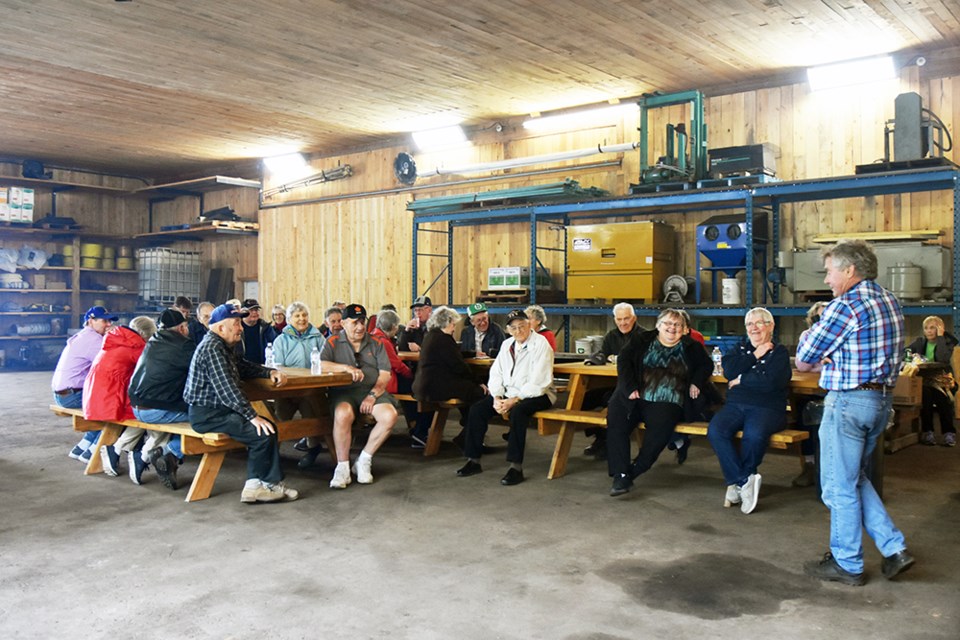The Innisfil Historical Society had a special venue for its June meeting.
Cookstown Marsh farmer Boris Horodynsky invited society members to his Line 3 farm for a barbecue lunch and a tour of one of the largest onion-growing operations in Ontario.
Horodynsky shared his personal history of farming, starting with four hectares in the Holland Marsh, then trying a brief three-year stint in Quebec before finally coming back to Ontario in 1985 when, like the pioneers, he cleared new acreage in the Cookstown Marsh.
The Cookstown Marsh lies north of Highway 89, divided by Sideroad 10. It was originally settled by three Ukrainian families in the 1940s, who began clearing land and farming, Horodynsky said, but it was nothing like his effort in the 1980s.
“We did a lot of land clearing. We’re a tree-hugger’s worst nightmare,” Horodynsky told the group.
Forests were felled, the stumps pulled and piled into massive piles, and burned, all while carefully monitoring the blaze to ensure the fire didn’t spread into the underlying organic soil.
But all that stopped in 2007.
“Now it’s almost impossible to clear any land. You need an environmental assessment,” he said.
Cookstown Marsh soils are particularly rich. Not only are they organic – a soil type that is easily worked, but low in nutrient content – they contain minerals and nutrients washed in from the surrounding upland areas, through periodic flooding.
“It’s probably one of the most productive soils in Canada,” he said.
Horodynsky currently farms 162 marsh hectares. Yields can be as high as 2,000 to 2,500 50-pound sacks of onions per hectare.
“That’s a tremendous, tremendous crop,” he said. “These lands are intensively farmed, and they produce big time.”
Horodynsky started with truck market crops, but expanded into root vegetables – carrots, parsnips, beets, and onions. Now, it’s all onions, in rotation with soy beans, bringing in an average $15 million in sales per year.
And that’s why, he told society members, he battled the Town of Innisfil over its failure to maintain the South Innisfil Creek Drain.
In 2002, his losses due to catastrophic flooding were “well over $1 million.”
The issue is finally on the way to being solved, he noted, after nearly 20 years.
Horodynsky chafed at government red tape, the “social welfare state,” the new carbon tax and climate-change concerns, but shared his love of farming, and the agri-business that he has built into a successful and vertically integrated operation.
“We have packing facilities, onion storage… a machine shop, welding shop,” he said. “We build all our own boxes.”
It’s a cost-intensive industry, said Horodynsky, noting a single tractor can cost $500,000, “but you put the money in, you get that money back. It’s an investment you’ve got to make.”
He has worked hard for success, and regularly gives back to the community by supporting local events and the new Rizzardo Health & Wellness Centre where his donation will go toward a community kitchen – and welcoming the historical society to an afternoon on the farm.



